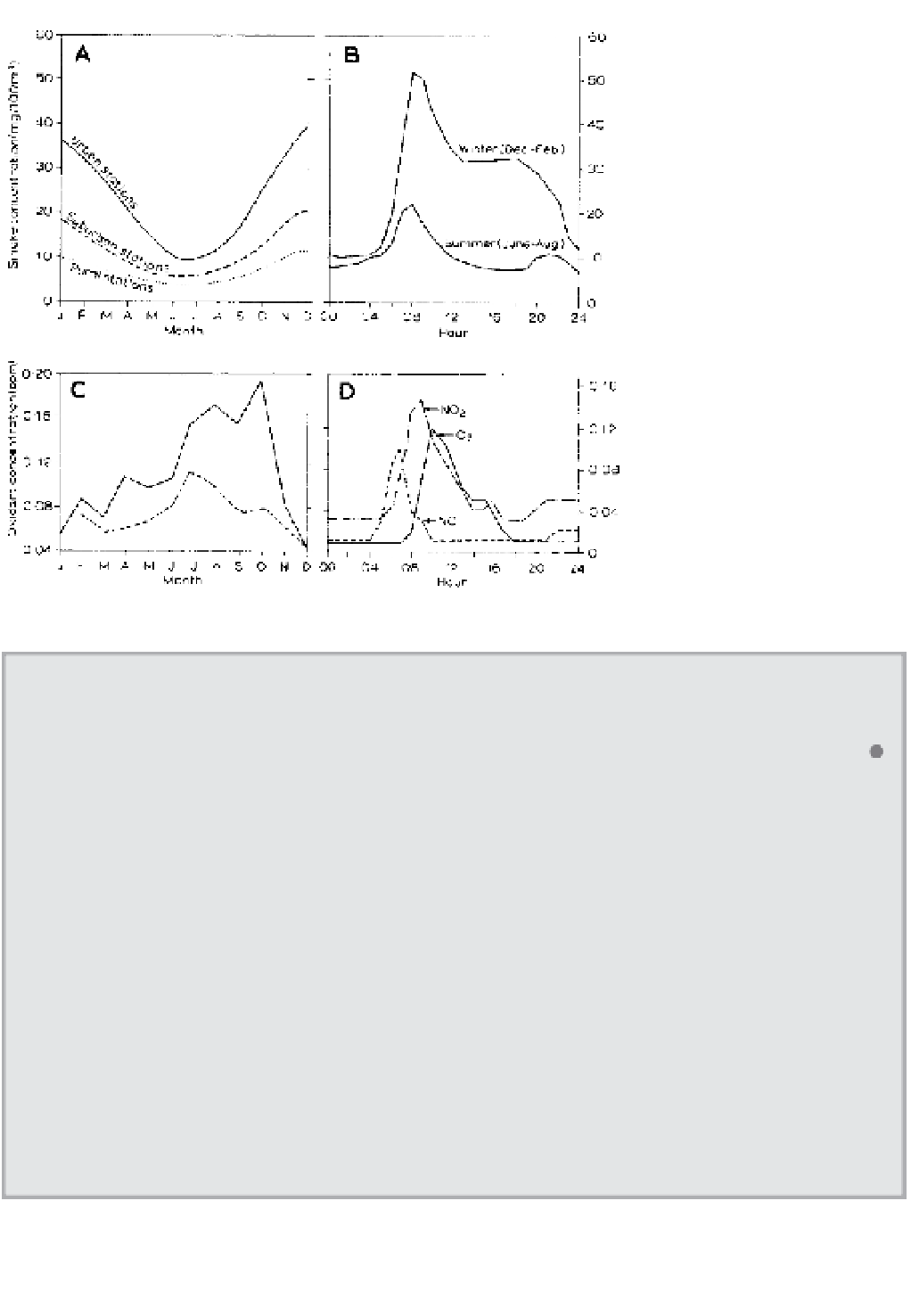Geoscience Reference
In-Depth Information
Figure 12.19
Annual and daily pollu-
tion cycles. (A) Annual cycle of smoke
pollution in and around Leicester,
England, during the period 1937
to 1939, before smoke abatement
legislation was introduced. (B) Diurnal
cycle of smoke pollution in Leicester
during summer and winter, 1937 to
1939. (C) Annual cycle of mean daily
maximum one-hour average oxidant
concentrations for Los Angeles
(1964 to 1965) and Denver (1965)
(dashed). (D) Diurnal cycles of nitric
oxide (NO), nitrogen dioxide (NO
2
)
and ozone (O
3
) concentrations in Los
Angeles on 19 July 1965.
Sources
: (A), (B) After Meethan
et al
.
(1980), (C), (D) After US DHEW (1970)
and Oke (1978).
URBAN CLIMATES
box 12.1
significant
20th-c. advance
There was recognition of the role of cities in modifying local climate during the 1920s and 1930s. In his classic book
Climate
near the Ground
Rudolf Geiger drew attention to many such findings. However, dedicated urban climate studies began
in the 1950s. To supplement data from the few existing city weather stations, T. J. Chandler examined urban-rural
temperature differences around London, England, at different times of the day and year by making traverses in an
instrumented vehicle. By repeating the journey in the opposite direction, and averaging the results, the effect of time
changes was essentially eliminated. Chandler wrote a classic book on the climate of London. Similar methods were
adopted elsewhere and the vertical structure of the urban atmosphere was also investigated by mounting instruments
on tall buildings and towers. Helmut Landsberg in the United States focused on European and North American cities
with long historical records while Tim Oke in Canada conducted observational and modelling studies of urban energy
budgets and radiative and turbulent transfers in urban 'canyons'.
The number of modern cities with populations in excess of ten million inhabitants was at least twenty in 2000, with
many of these in the tropics and subtropics, but our present knowledge of urban effects in these climatic zones is limited.
Reference
Geiger, R., Aron, R. H. and Todhunter, P. (2003)
The Climate Near the Ground
, 6th edn. Rowman & Littlefield, Lanham, MD, 584pp.


